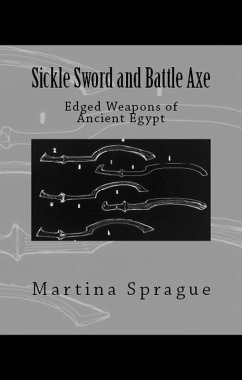The history of ancient Egypt is divided into thirty-one dynasties under the pharaoh kings. Warfare and military operations can be traced through pictorial evidence and narrations carved into rocks for smaller campaigns, and temple walls for major wars. Action scenes portray fallen horses and chariot troops employing bows and arrows, and knives or swords. Warriors ready for combat can be seen wielding battle axes high above their heads. The crescent shaped battle axe could easily kill an adversary by the sheer force of the blow. Hieroglyphs also indicate that three types of sword blades were eventually employed in warfare: straight, curved, and half-curved. Ancient wall carvings frequently depict the sickle sword, suggesting that the weapon was a highly valued instrument of war.
This book begins with an examination of metal and weapon manufacturing in ancient Egypt, and discusses the different sword shapes used. It then explores Egypt's military organization, including the tactics and weapons of chariot, infantry, and naval warfare. Next it discusses the structure of the army, the procedures used for recruiting and training the troops, and the general sentiment of the population toward warfare. The concluding remarks recap cultural traits and important developments in Egyptian history, and also discuss the cultural and spiritual value of the sword.
Dieser Download kann aus rechtlichen Gründen nur mit Rechnungsadresse in A, B, CY, CZ, D, DK, EW, E, FIN, F, GR, H, IRL, I, LT, L, LR, M, NL, PL, P, R, S, SLO, SK ausgeliefert werden.









